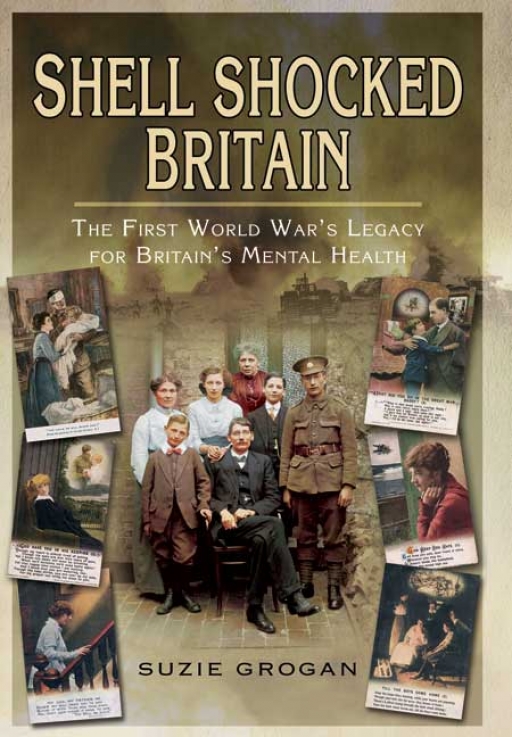Publisher’s Description: ‘We know that millions of soldiers were scarred by their experiences in the First World War trenches, but what happened after they returned home?
Suzie Grogan reveals the First World War’s disturbing legacy for soldiers and their families. How did a nation of broken men, and ‘spare’ women cope?
Drawing on a huge mass of original sources, Suzie Grogan answers all those questions, combining individual case studies with a narrative on wider events. Unpublished material from the archives shows the true extent of the trauma experienced by the survivors. This is a fresh perspective on the history of the post-war period, and the plight of a traumatised nation.’
Centenary News Review:
Review by: Eleanor Baggley, Centenary News Books Editor
‘By the time of the Armistice, the British Army had identified and treated approximately 80,000 young men for shell shock.’ That figure is not unknown to us and shell shock is a common image of World War One – the mute, shivering soldier unable to vocalise the horrors he has seen – but Suzie Grogan in Shell Shocked Britain examines shell shock on a much deeper, long term level and argues that war trauma extended past the front lines to the home front and affected not only soldiers, but men, women and children at home.
Before getting to the crux of the argument Grogan dedicates a chapter to the history of shell shock before, during and after the war. Links are made between the treatment of women before the war and the treatment of shell shock sufferers and the changing attitudes towards soldiers and trauma are succinctly tracked from the first use of the term by Charles Myers in The Lancet in 1915 to the 1922 War Office Committee.
Throughout this brief history Grogan is sensitive to the issues of class and gender that made shell shock such a complicated issue.
Much of the initial information will be familiar to anyone with more than a passing interest in the subject. It is later in the book when Grogan begins to examine trauma on the home front that the strength of the over-arching argument becomes clear.
Children experienced loss on a huge scale. They faced their own bereavements and were often surrounded by bereaved relatives or friends. One individual remembers crying not because her father had been killed, but for her mother. Loss at such a young age and the restructuring of families had an impact on children at the time and later into adulthood.
The rise of the eugenics movement was surely fuelled in part by the significant increase in mental illness in wartime Britain and the worry that all the ‘fit’ men had been lost to the conflict.
The disillusionment of the Twenties was compounded by survivor’s guilt, difficulties adapting to civilian life and an increase in suicide rates.
Each of these individual factors is given significant space in the book as Grogan weaves her argument, ultimately concluding with a quote from Victor E. Frankl that ‘an abnormal reaction to an abnormal situation is normal behaviour’. Although Grogan is keen to point out that she does not believe war trauma left its legacy on all those involved or on all aspects of society, this book demonstrates that the trope of the shell shocked soldier so prevalent in today’s society is not representative of the wider traumas faced by soldiers and civilians alike.
Grogan’s argument is well-researched, well-evidenced and encourages a deeper understanding of the reach of war trauma. Written in a detailed yet lively and accessible style, Shell Shocked Britain is both the perfect introduction to the subject and an interesting examination of some of the more long term repercussions of shell shock.
What do you think about this book or review? Please add a comment below.
